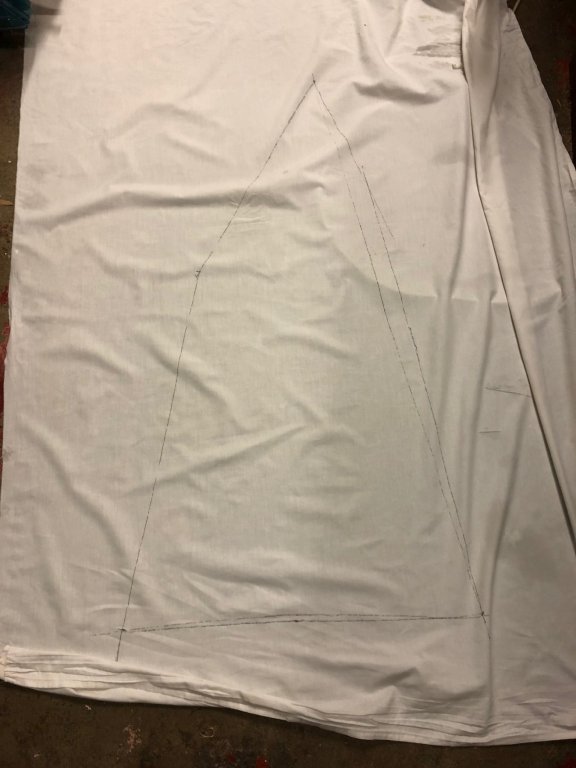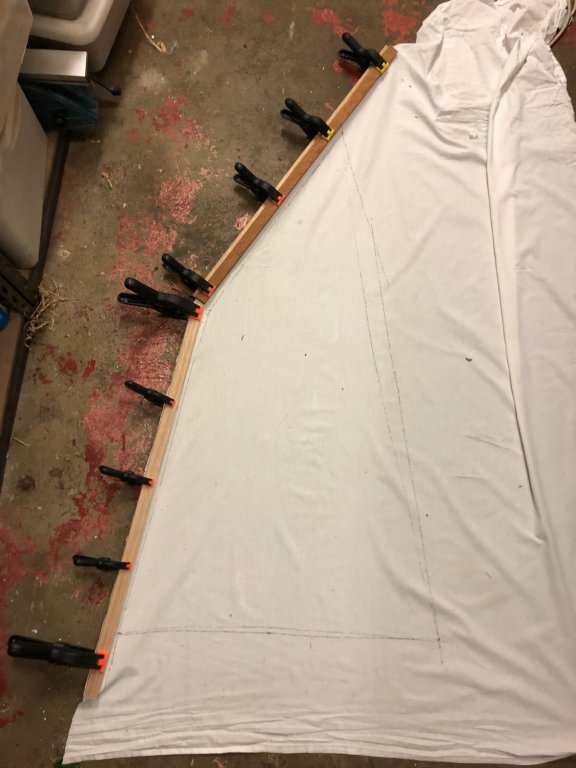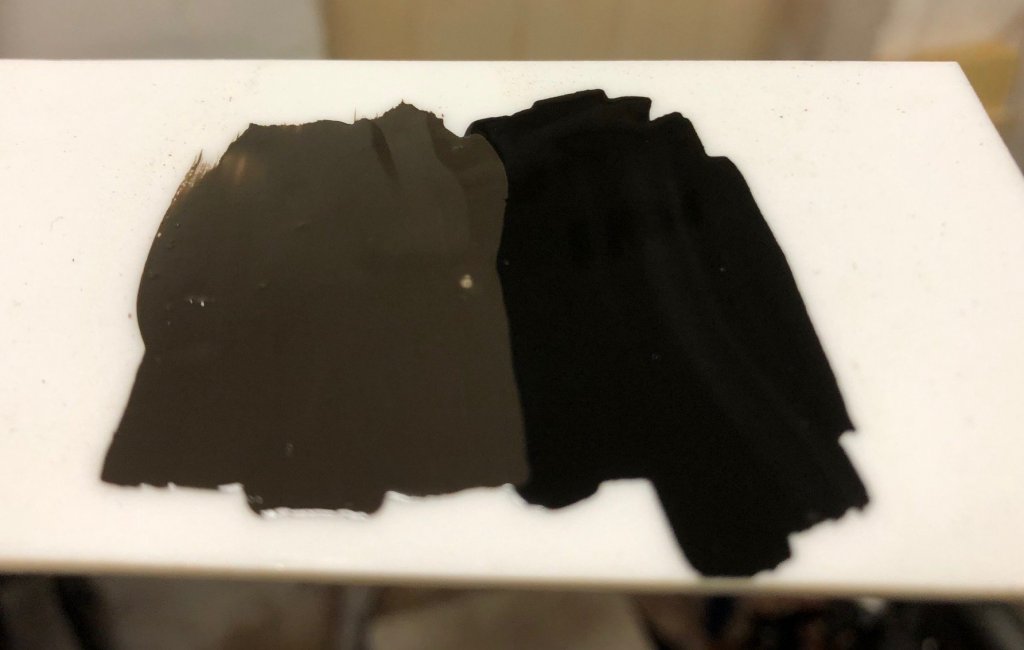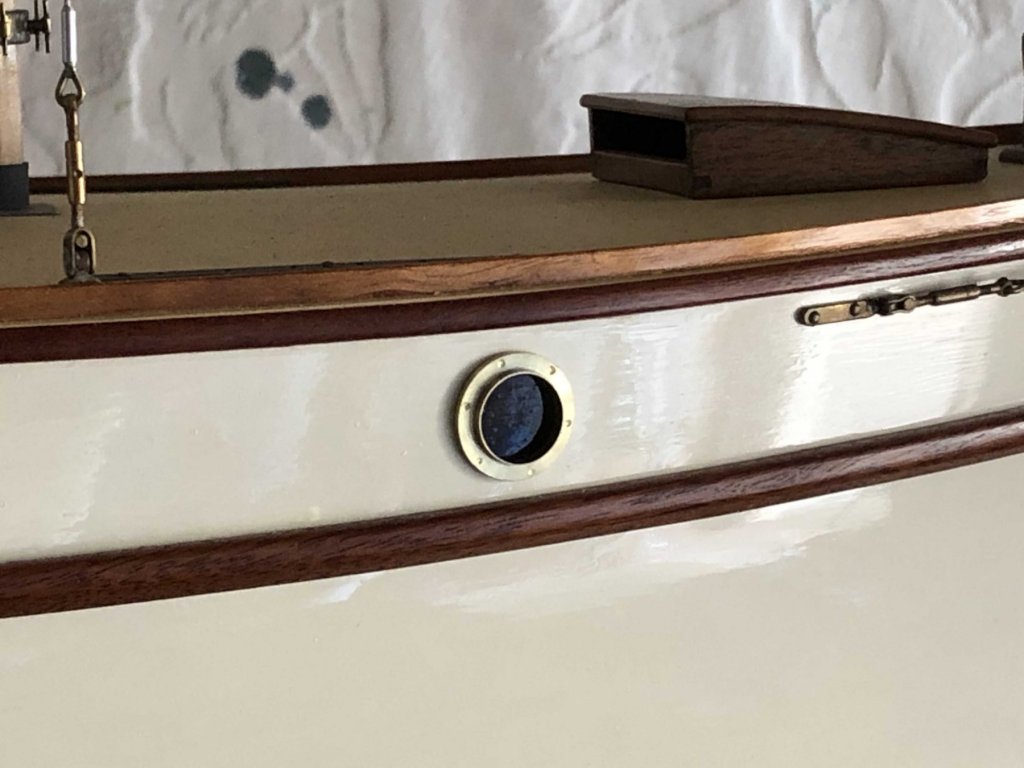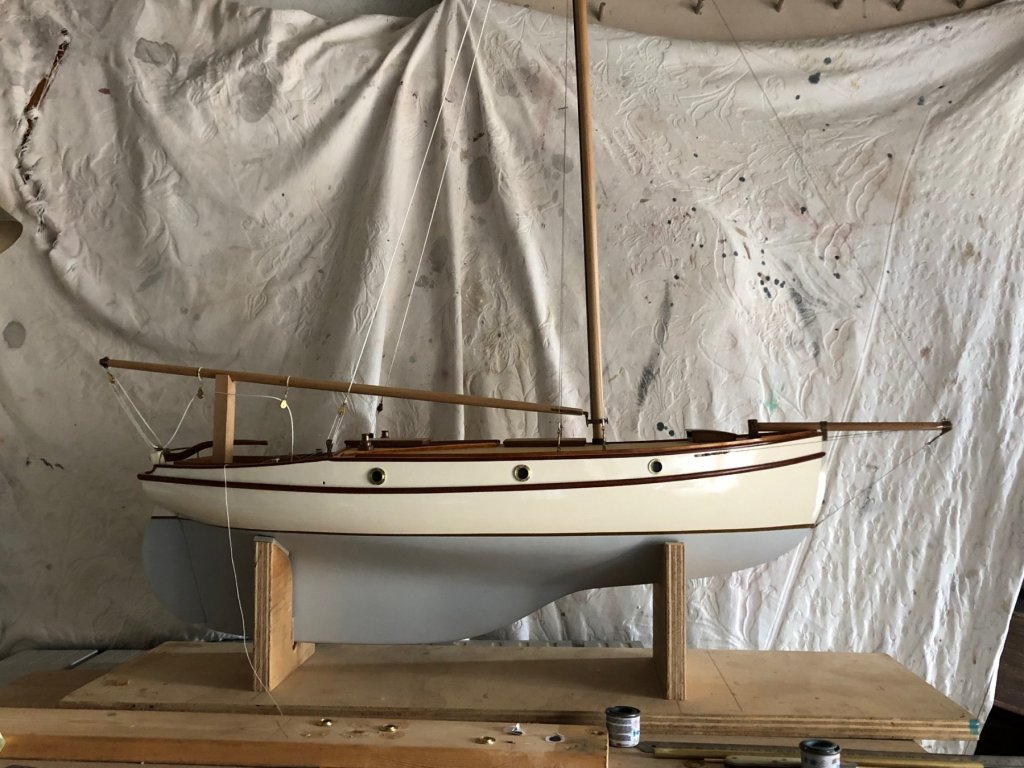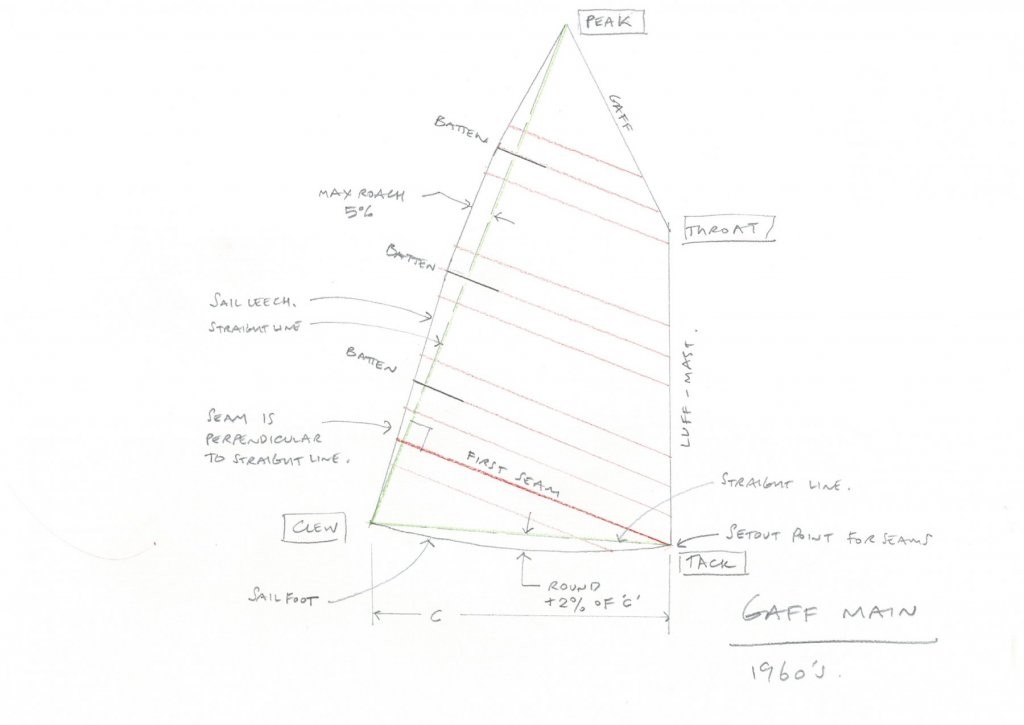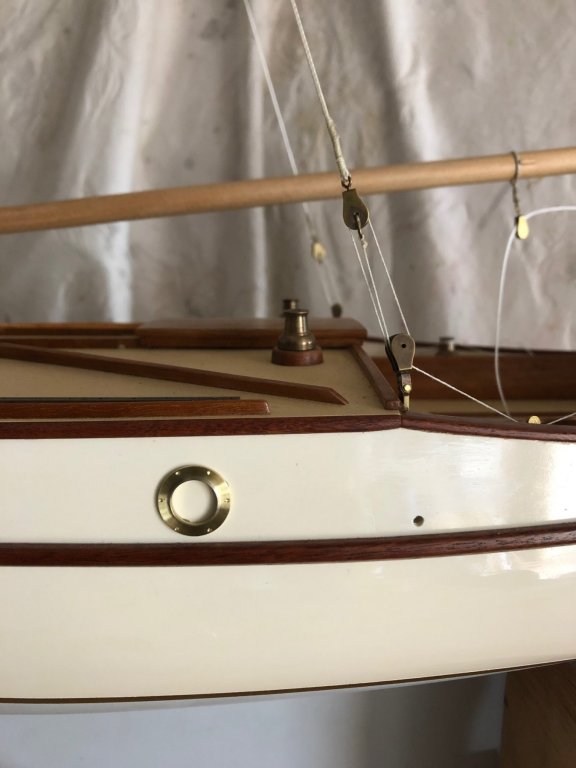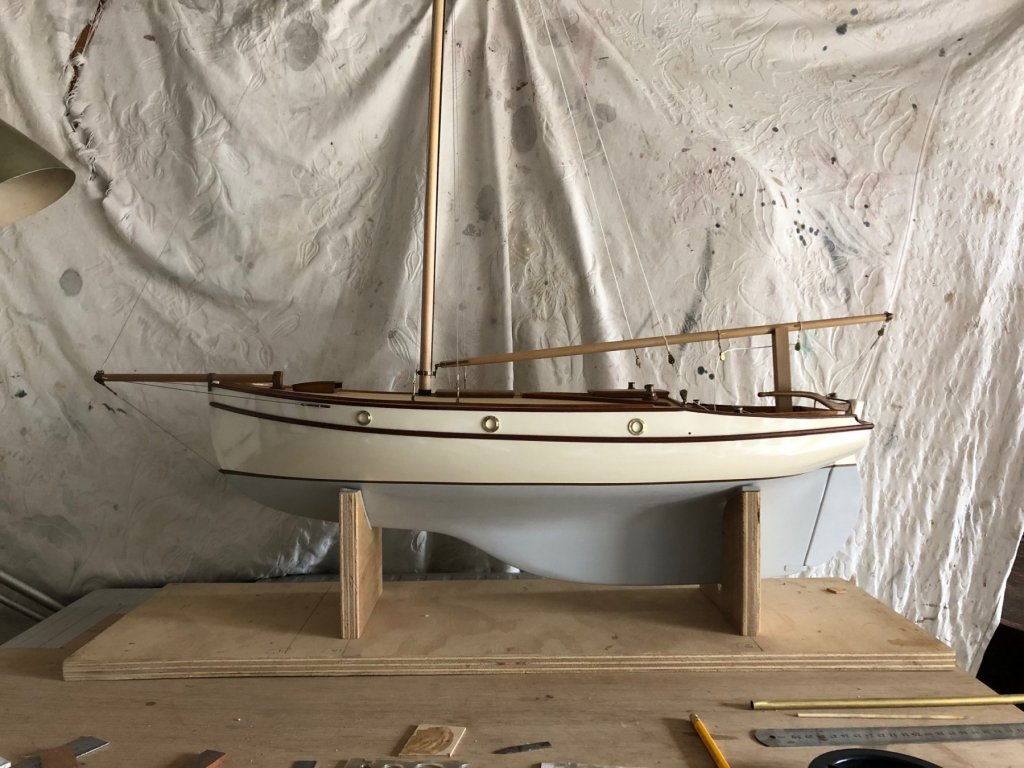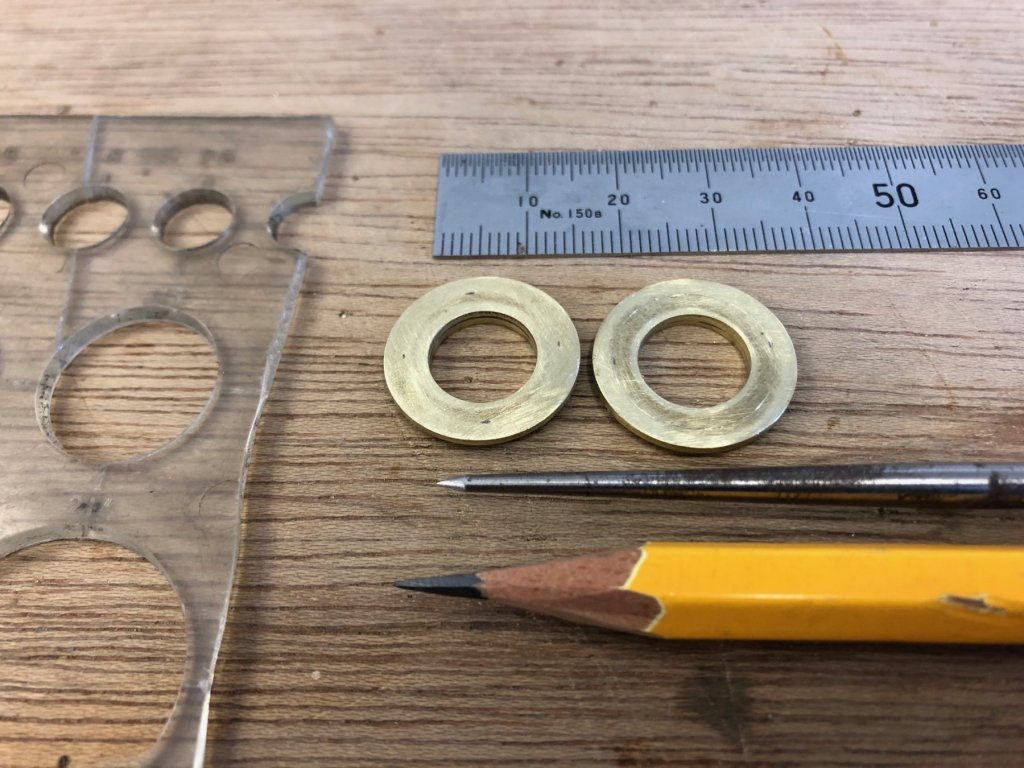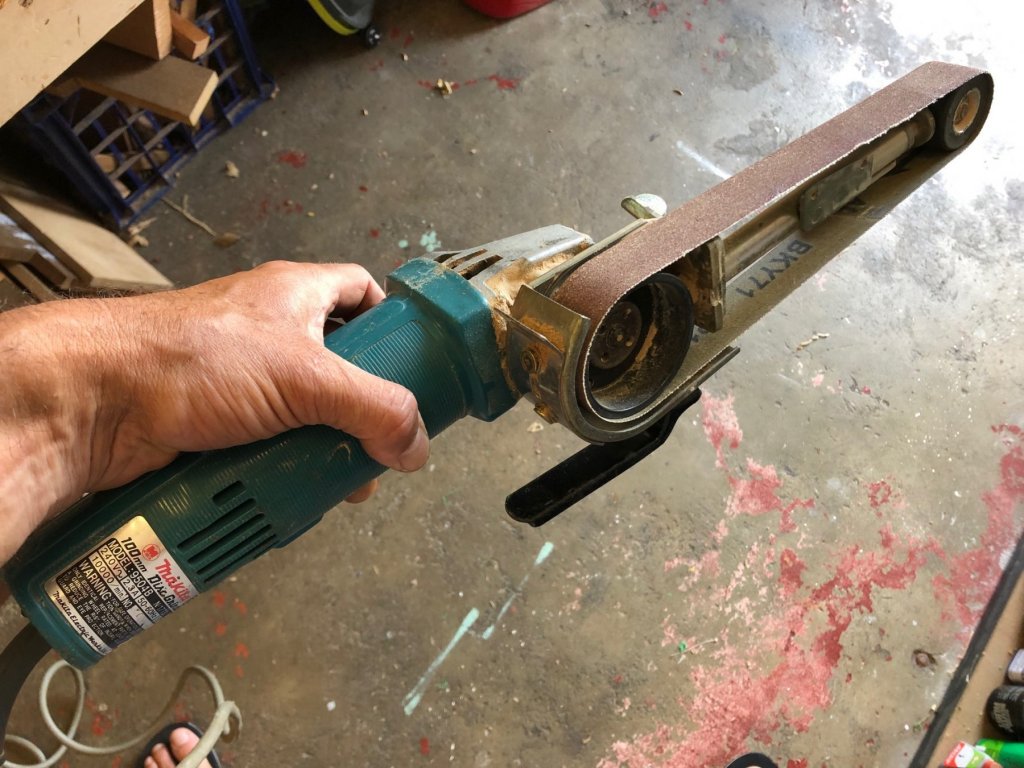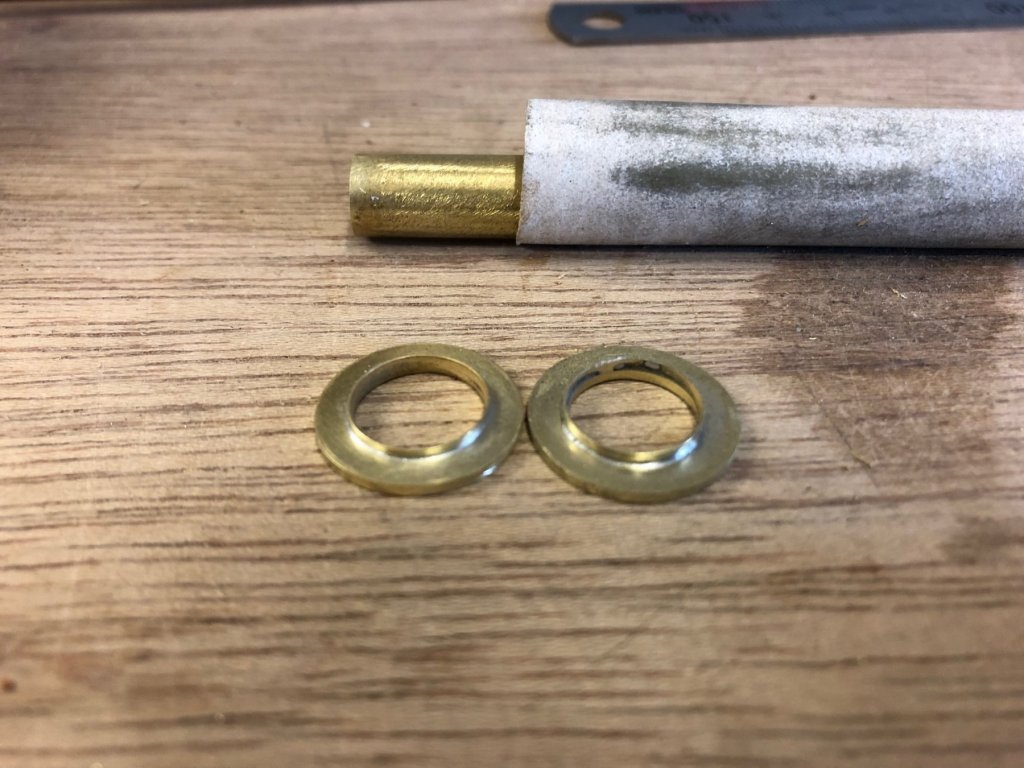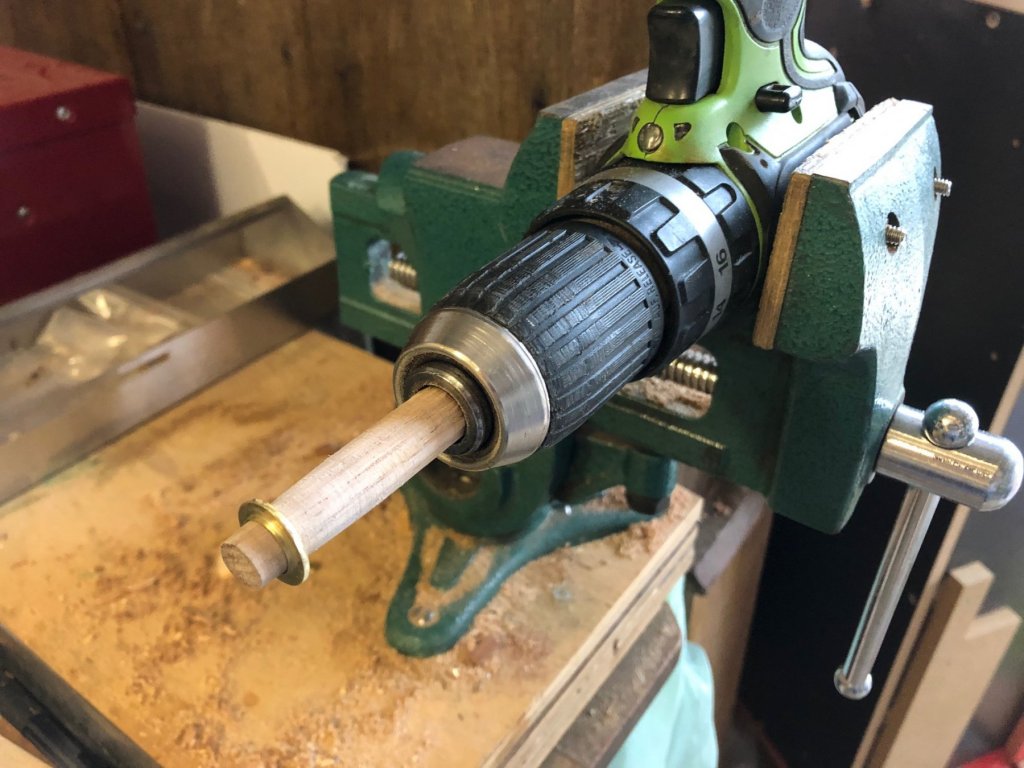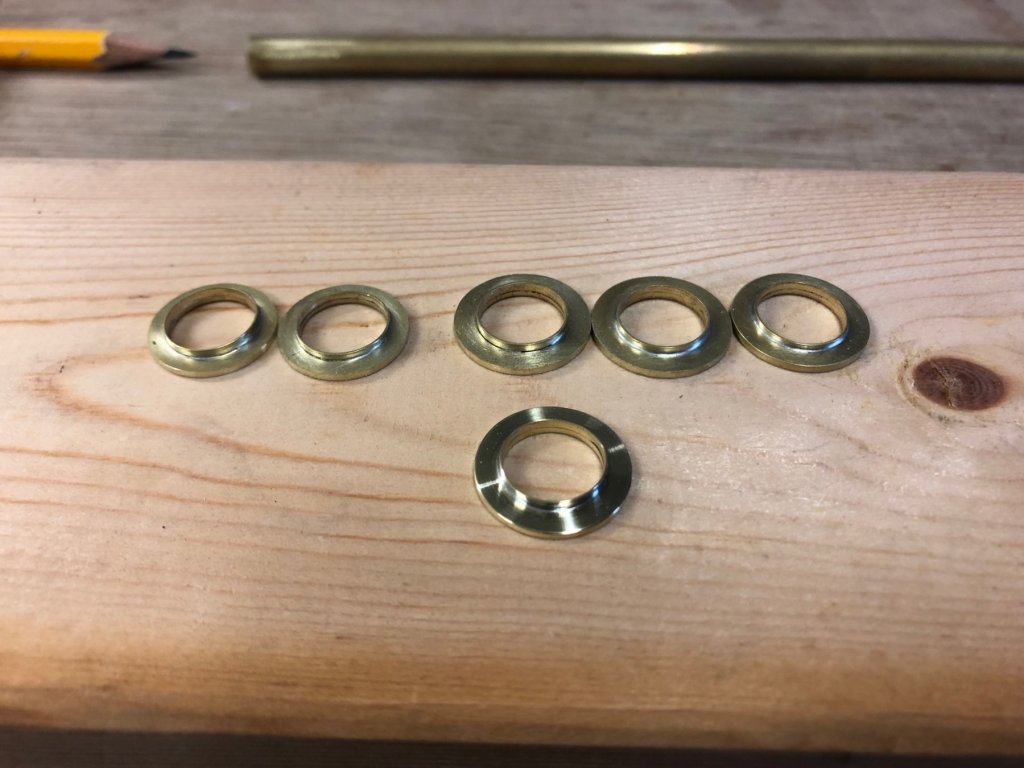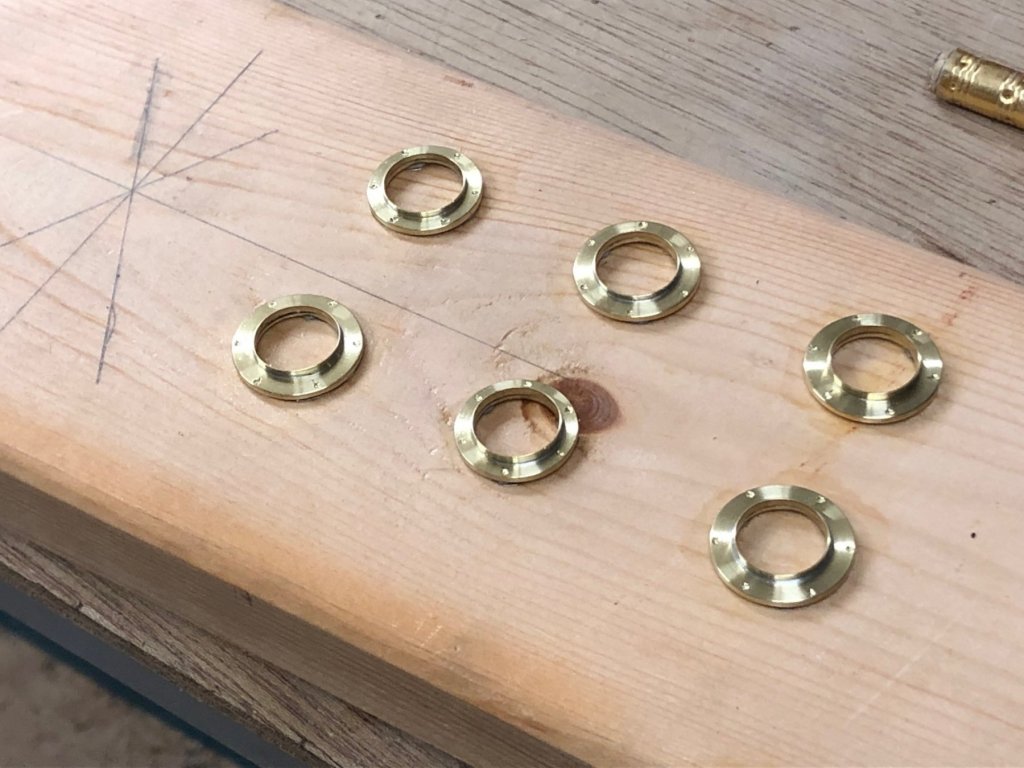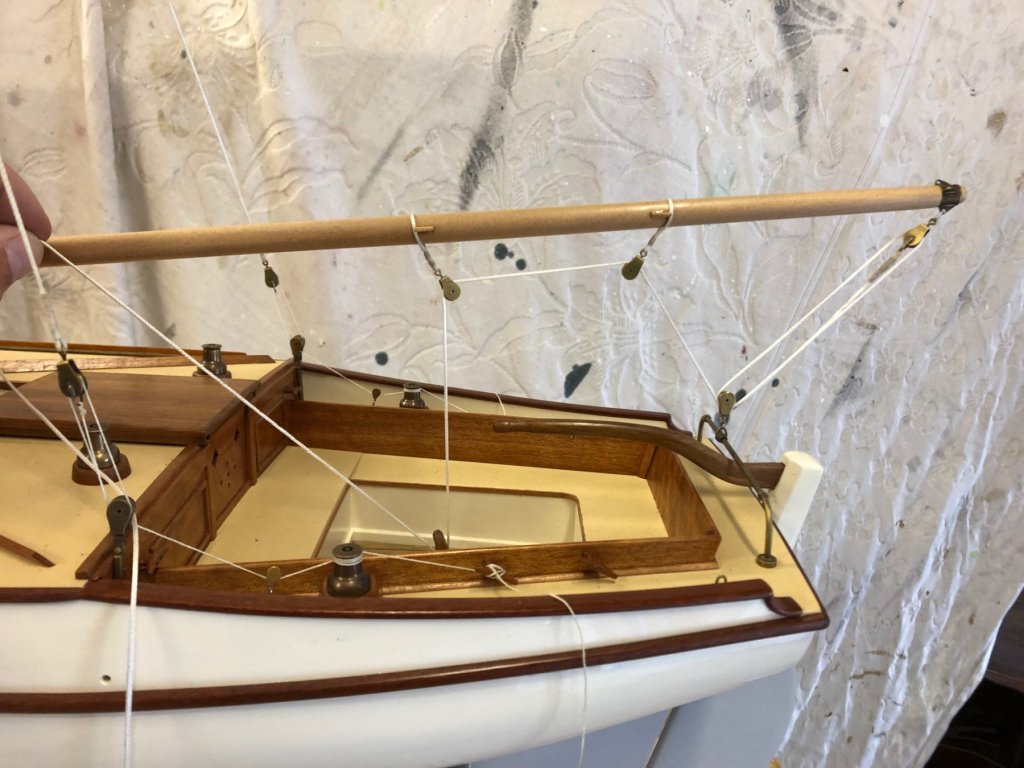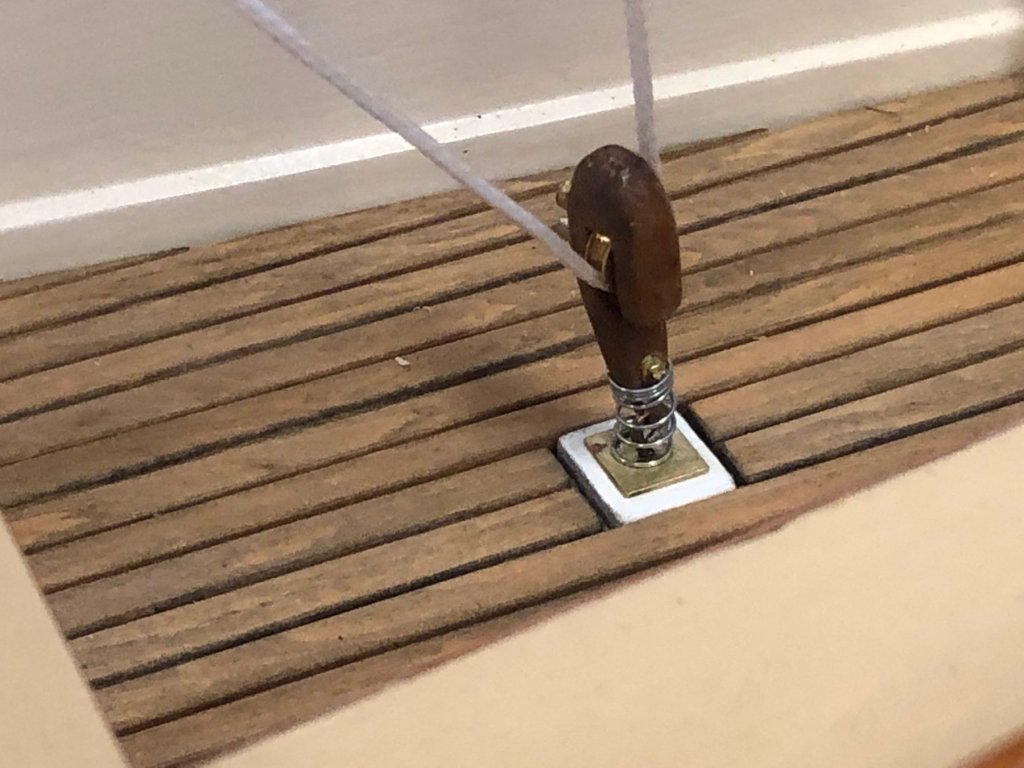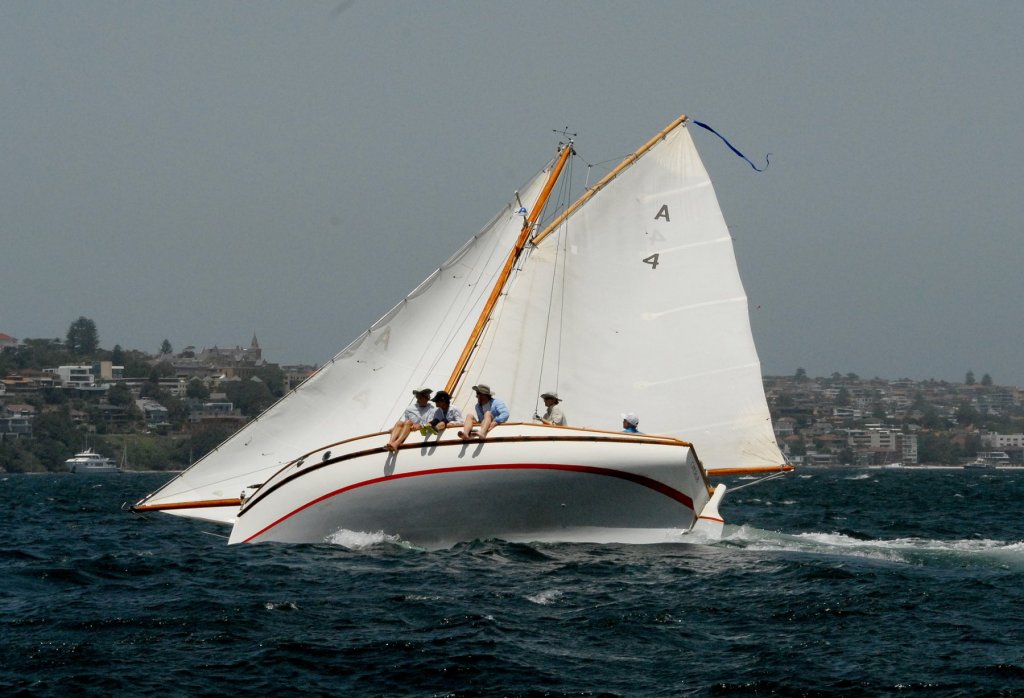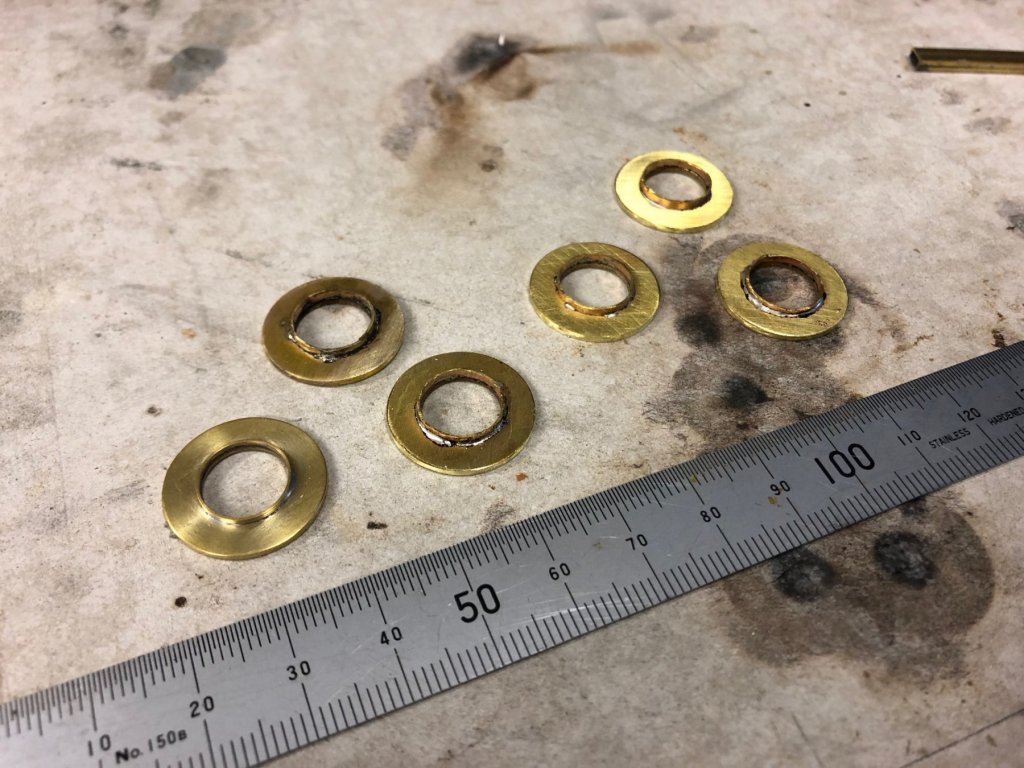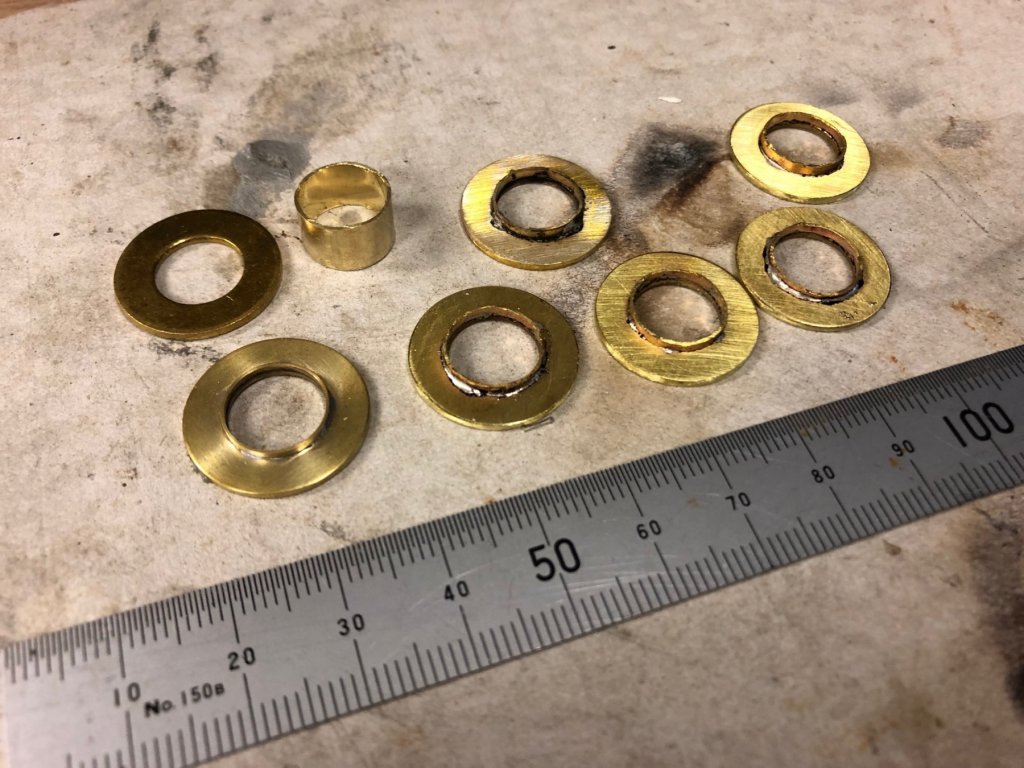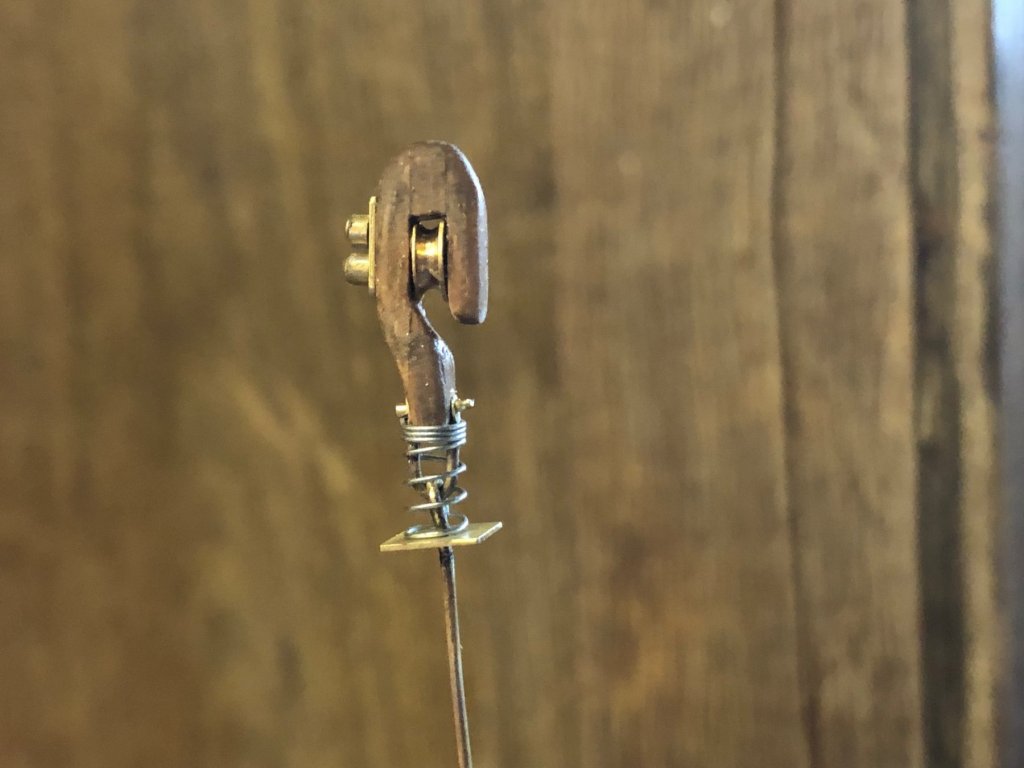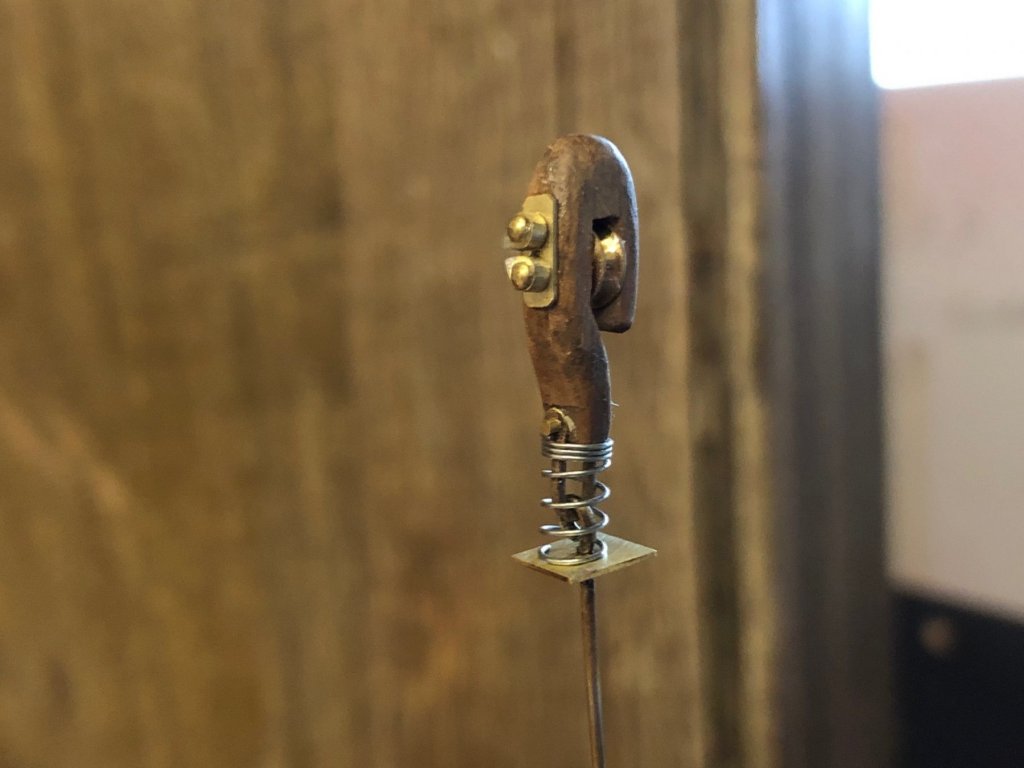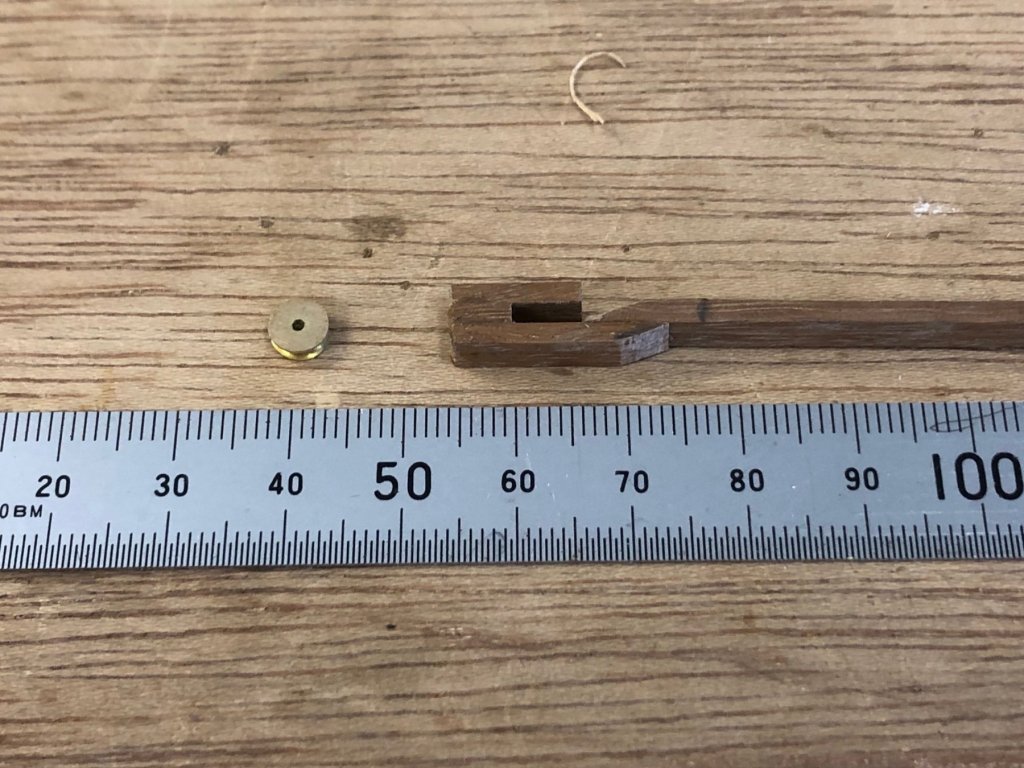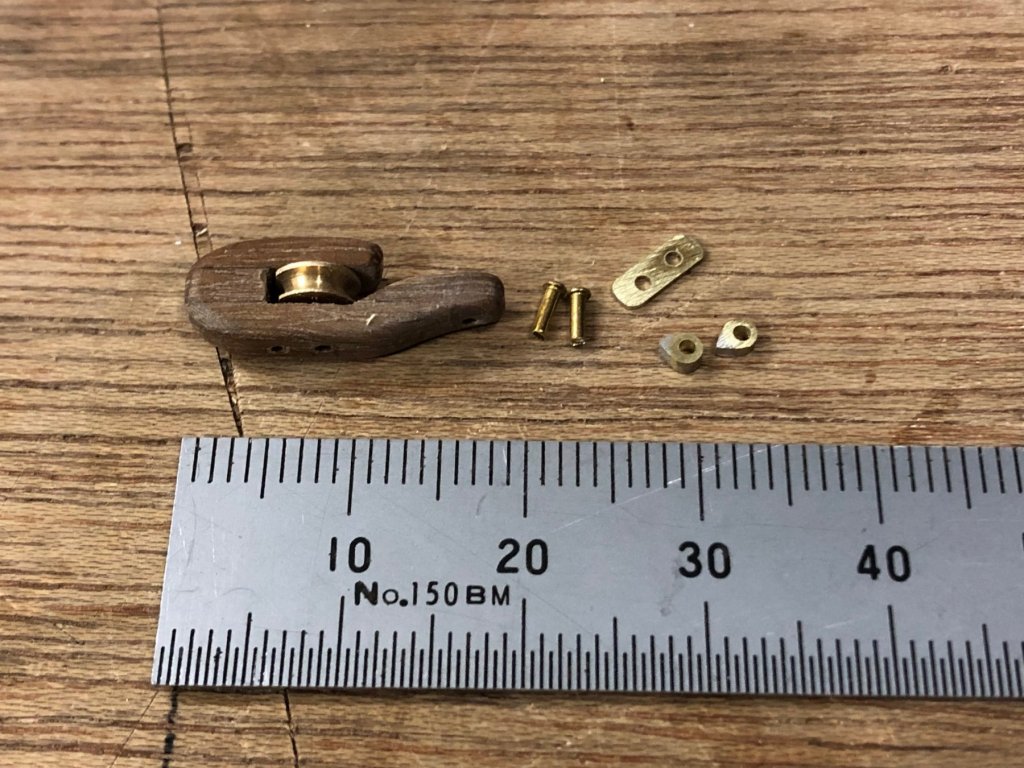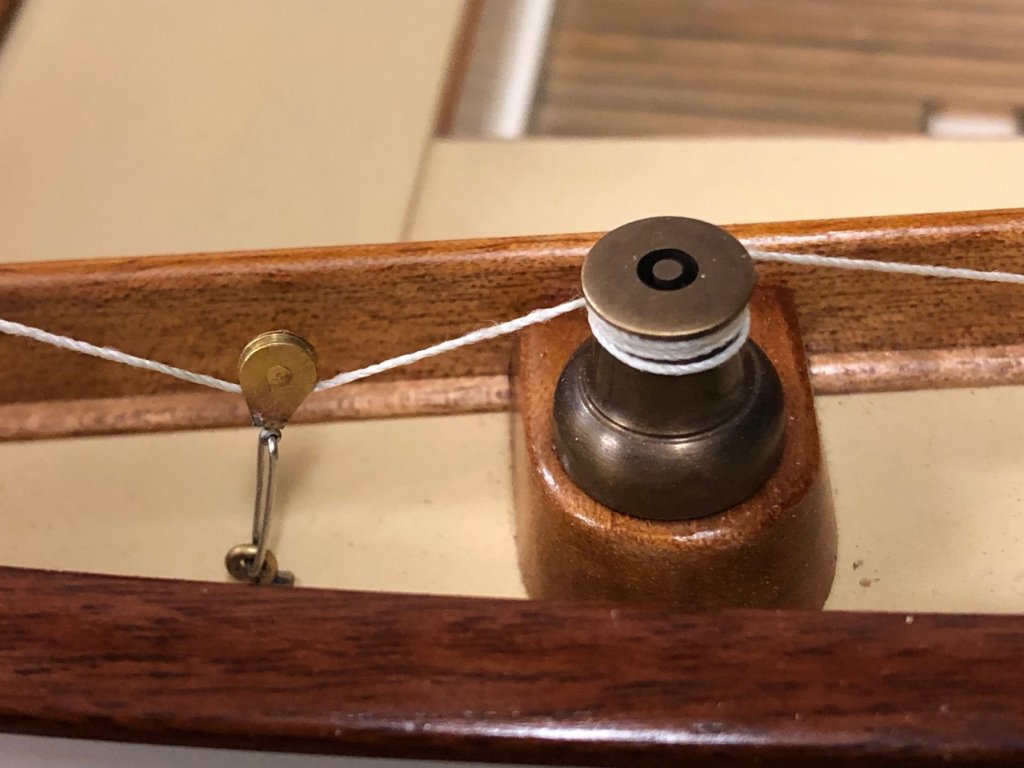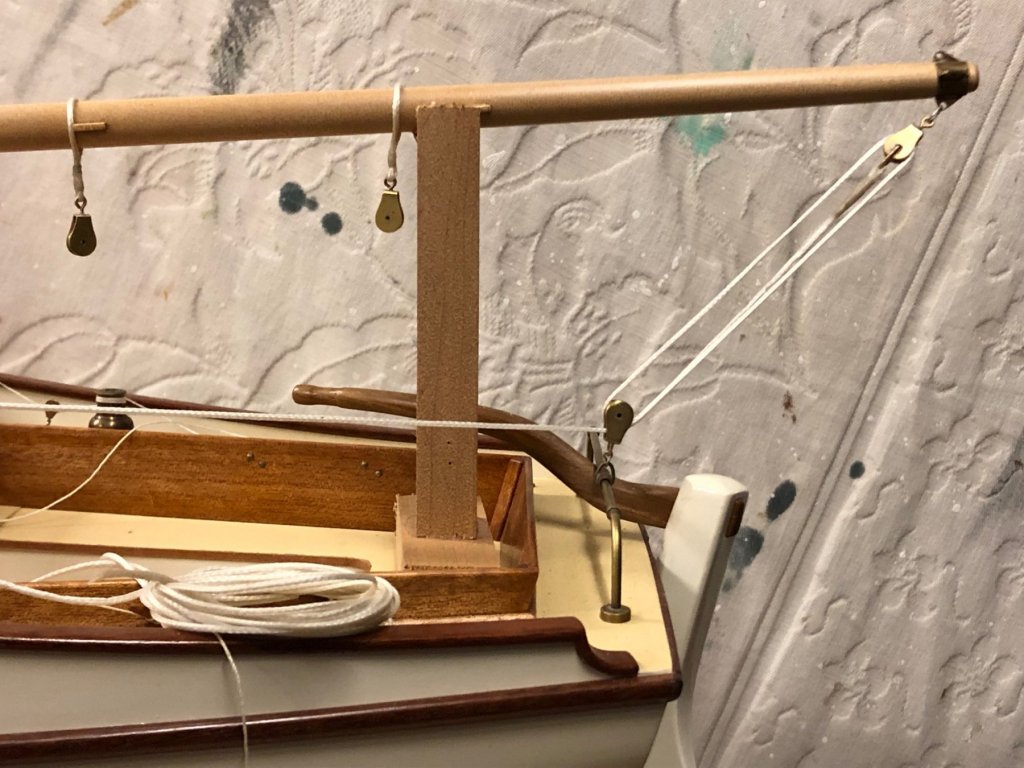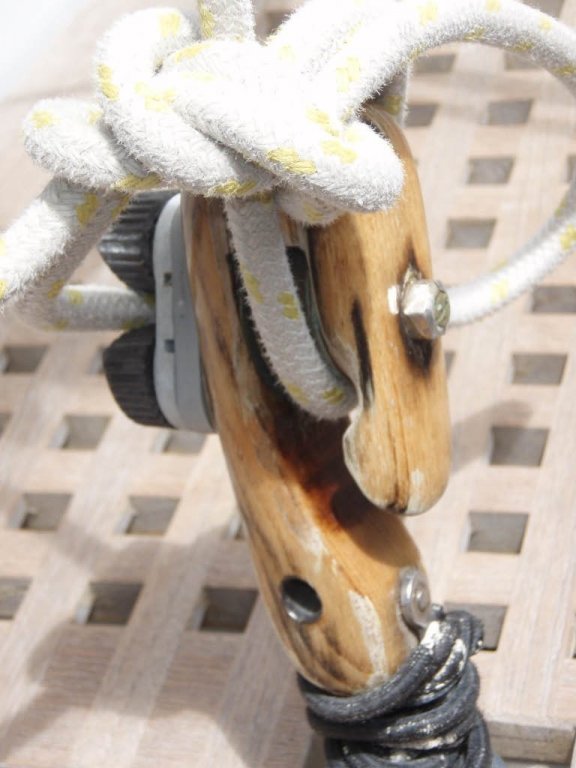-
Posts
804 -
Joined
-
Last visited
Content Type
Profiles
Forums
Gallery
Events
Everything posted by Mark Pearse
-
This is the porthole 'hole' colour, with black as a comparison: I've been thinking about how to do the sails, which are planned to be rigged & with the wind in them. So, my plan is to first make the mould to form the sails on & to use Silkspan. I considered balsa as a form but the cost would be very high, other cheaper timbers perhaps ok in cost but difficult to work. I'm thinking of fabric, set to a shape - at this stage I'm thinking of supporting & coaxing the fabric into a form & then saturating it with epoxy glue to set the shape. If it still needs to be stronger I'll add more layers on the back. I started with a piece of scrap cotton (or perhaps a polyester cotton blend), ironed it & roughly drew the mainsail profile. I cut some timber battens, then glued & clamped them to the edges for the mast & gaff spar - they will be the only straight sail edges. Note that the battens are about 100mm longer than that edge of the sail, I think it's going to help to have the sail mould be larger than the sail. The rough plan is to suspend it all, weight the fabric into the shape I want with sand & wet the fabric with water from a spray. I'm hoping this wetting will help the fabric to get a soft & curved form as it dries. When I'm satisfied I'll then apply epoxy, probably by delicately brushing from underneath. Seen from above, the gaff will be a different angle than the boom, by perhaps around 20º, the other parts will all be curved in various shapes & profiles. If this works I'm going to buy a lottery ticket.
-
Hi Vaddoc nice work. I suggest keeping the flanges as small as reasonable - these fittings don't need to be symmetrical if one flange has only one hole.
-
Thanks for the input MNL, that's a good idea. On this forum there's many magnificent models that are a full replica to scale, so each part is made. I haven't taken this approach, I want to show the last (& unbuilt) design by a little known amateur designer &, so giving the impression of an actual yacht is more important to me than making each piece. Part real scale work & part "if it looks right, it is right". By this measure, in some cases to show something that would exist could be wrong; my own rule was to imagine that I was standing say 10m from the actual yacht, & what would I see? So I was reconciled to perhaps not having glass - I was concerned that the reflection would be too visible. My observation from the actual is that you see the dark circle & perhaps a bit of reflection. Leaving the decision as late as possible, I painted a dark muddy brown spot in gloss enamel paint as a backdrop for the porthole "holes". To my eye, the effect is really good & I'm happy with it. Also, the darker paint does show reflection more than the cream colour, you can see that effect below. A bit on colour: I am very much against using black unless it is a black painted object, & even then I'd consider backing it off a little to achieve the scale effect of black - the further away you are from a black object, the black is affected by surrounding light & is very slightly taken away from black. For a hole, I think black would be too severe & not look right. I'll show a sample of the actual colour I came up with, compared to a piece of real black. The detail photo is poor because of the natural light conditions, low level of light. I've been considering the sails for a while, & after seeing how silkspan can be shaped to a curve in multiple directions, layered, coloured etc I'm going to try this material. My thought is that the sails should be 'set' as if with wind in them. The stand might need to be able to hold the model at a heel angle (as well as vertical), but that's for the future. This boat would have been built in the mid 1960s & I had a chat with a sailmaker Ian 'Macca' MacDiarmid, who's skilled at gaff sails. He said that by 1967 dacron (or terylene in UK & something else in Japan) was good quality & was used quite widely. The cutting of the sails for a boat of that era, & how the size & setout the seams is shown on the sketches below, which Macca explained. One thing not noted in the drawings is that the battens would be shorter than today, & for this mainsail he said 4 would be correct for the period & size of sail. I did the drawings because the information is straight from the horses mouth & might be useful to others. The setout for the headsail mitre is important (& is not by a perpendicular line to the luff), so the seams meet each other at the mitre - see the "EQ" (equal) setouts from the clew. Hope it's clear. Also: it's assumed the main is a loose foot, I'm guessing the foot round would be less (or zero) with a laced foot.
-
thanks everyone, & thanks for the advice Capt Mac. In the last photos the brass is quite shiny (& in that light they are probably too bright), so I did some photos in natural light rather than the workshop bright lights. The effect is closer to what I was after (to look like polished brass), but I'm still wondering about the way the 'fixings' get a glint of shine. The cause is just the side light catching the angle of the dent. I might experiment with putting something into them like a small brass nail, to look like a counter sunk head fixing.
-
The portholes commenced in post #278 are almost done now, & in this case I'll show the technique. They are fabricated from brass washers & thin slices off a brass tube. The insides of the ports needed cleaning up, below shows finished & not finished: The overall diameter is too large, below are the forward portholes which are smaller. I marked the final size with pencil & scribed the circle of the final size. Next the tender mercies of the handheld bandsaw.....& try to sand to the line. Then to the high-tech linisher: Below there's 5 reduced in size, & one has also been linished. Close up They looked like they needed something more, so I drilled shallow marks to replicate fixings. They have also been coated with one coat of Humbrol satin clear coat. The designer - Cliff Gale - apparently always had his portholes to a high polish, so out of respect for that I'll replicate that with the clear coat on the brass. That's why I was being fussy about the visible finish. The drilled marks look a bit crude, & I'm hoping that the effect will be better when they are mounted. I'm not sure about the glass, but I recall in another post CD case plastic was suggested. thanks
-
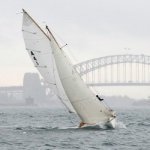
15' Dinghy by Bedford - FINISHED - 1:1 scale
Mark Pearse replied to Bedford's topic in Non-ship/categorised builds
that's looking very nice -
Thanks & best wishes everyone. Hi John I have mixed feelings about blue water racing, & I’m not sure about how much I’d enjoy a Hobart; but maybe one day. Vaddoc, thank you. I have made a bit more progress on the ports & they’re are going ok from low tech techniques. When back I’ll post some info on what seemed to work. Michael thanks also. The weather helm isn’t a lot if you judge by the angle of the tiller/rudder, but everyone agrees they have a heavy helm.
-
thank you for the feedback & visits Main sheet setup & cockpit block finished, or possibly. I might move the forward thumb cleats on the boom a little further forward, & might redo the lashing to make it a bit shorter. Some recent Sunday fun below, a lovely shot. The sky colour is interesting, they call it a black nor-easter. It happens when the usual sea breeze is reinforced by an approaching low pressure system & you get stronger breezes & this grey effect in a clear sky. All the best for Christmas, I'm off to Tasmania (by aeroplane...)
-
HI John that's wonderful news. This is going to be a fascinating build, best wishes, Mark
-
thanks GL, that's what we call gum turpentine. Is the linseed oil you use plain or boiled?
- 219 replies
-
- smack
- cross-section
-
(and 2 more)
Tagged with:
-
that's very nice Is the turpentine gum turpentine or mineral .... & do you think it would make a difference? Mark
- 219 replies
-
- smack
- cross-section
-
(and 2 more)
Tagged with:
-
Hi Carl, the thin rings were soldered using standard solder, but I used the pre-mixed paste & wiped some of the paste onto the underside edge of the ring & lowered the ring onto the base part of the porthole; then lightly weighted the ring so that when the solder melted the ring wouldn't move. I used paste to reduce cleaning up. Perhaps there is a better way, but I'm not experienced at this fine soldering work.
-
The cockpit snatch block is now done, & waiting for the mounting block to be finished. The spring without load pushes the block on an angle but I'm expecting it to sit in line when a bit of sheet tension is there. The sheet will need to squeeze into the cam cleat, & a bit of sanding might be needed. The layers of timber are visible, but it doesn't bother me. I'm getting the portholes done as well. The earlier sample & raw materials (brass washer & tube) are one the left & the latest ones are the others. The forward ones are slightly smaller overall diameter, & I'll just reduce the size with sanding blocks. thanks
-
HI Michael you've done this beautiful detail with great finesse.
- 2,207 replies
-
HI everyone, I've been doing some work on the model yacht, slowly moving along. The main sheet block in the cockpit sole is a snatch block, a popular detail for smaller gaffers here is the photo below - & it's not a very good shot, but the main sheet goes below the sheave & the wraps around the side of the block body & is held by a cam cleat. This is so you can quickly let out a lot of mainsheet, & it's easier to bring the main sheet on by pulling downwards (rather than upwards) & then to secure the sheet at this block as the last thing. The mess of black stuff at the bottom is a bundle of shock cord that's to make it a stand-up block. I'm sure this doesn't at first strike anyone as a good setup, but you can't bear away at all on a breezy day without easing the main, & if you need to do it quickly you have to dump a lot of it fast. I selected a strip of Spotted Gum that is the same thickness as a brass sheave, & made the ship from cut strips. Then roughly shaped. The parts for a cam cleat are there, the eccentrics on the cams were soldered blobs on a solid rod, then sanded to shape. Some more shaping on the timber required. I plan to make it a stand-up block with some spring from a plastic pen. Other minor details underway are: the small lead blocks for the running backstay tackles are installed; & the mainsheet setup is underway. The smallest blocks are tiny etched ones & the main sheet is scale braided poly rope about 1mm diameter - a bit thin but but looks right. thanks
-
nice resolution of the detail Michael; & thank you for the Cornubia video link - it's interesting how flat her wake is for such a large vessel Mark
- 2,207 replies
-

15' Dinghy by Bedford - FINISHED - 1:1 scale
Mark Pearse replied to Bedford's topic in Non-ship/categorised builds
beautiful. Thanks for sharing, Bedford. Mark -
HI Michael looks amazing, & ever less space to do it in... What is the function of the line that runs through the sheave at the bottom of the topmast - & why it does the run through the bottom sheave? thanks, Mark
- 2,207 replies
-
Hello Maury, she looks to be strongly built as a boat - how large in actual size are the ribs & their spacing? I assume they are sawn pieces rather than bent...? They have a very interesting shape, quite dishy for a sizeable vessel. thanks, Mark
-
Hi GL this is going to look fantastic, the staining & timberwork look really authentic, you can almost smell the bilge already. Mark
- 219 replies
-
- smack
- cross-section
-
(and 2 more)
Tagged with:
-
lovely work; the fine attention to detail makes it difficult to see what the actual size is. Mark
- 2,207 replies
-
Hi Michael, I hope you don't mind some more comments on aspects of this discussion: Roller reefing isn't hard to use, & it does allow more shades of adjustment (eg: to balance the rig) than reefing points. I don't think lazyjacks are possible, I think it means the topping lift goes to a rotatable fitting at the boom tip. I'd just add that you can still adjust the aerofoil shape of a gaff main without a loose foot - the luff tension & also the peak halyard will both have an effect. Mark
- 2,207 replies
-
I think they will clean up well, & agree with Gotz that something to help hold them is a good approach for delicate flat objects. Another idea is to put some rubber contact glue onto the face of a flat piece of wood & let it dry fully. The dried glue might be enough to hold the arcade pieces gently & safely while being sanded. Mark
About us
Modelshipworld - Advancing Ship Modeling through Research
SSL Secured
Your security is important for us so this Website is SSL-Secured
NRG Mailing Address
Nautical Research Guild
237 South Lincoln Street
Westmont IL, 60559-1917
Model Ship World ® and the MSW logo are Registered Trademarks, and belong to the Nautical Research Guild (United States Patent and Trademark Office: No. 6,929,264 & No. 6,929,274, registered Dec. 20, 2022)
Helpful Links
About the NRG
If you enjoy building ship models that are historically accurate as well as beautiful, then The Nautical Research Guild (NRG) is just right for you.
The Guild is a non-profit educational organization whose mission is to “Advance Ship Modeling Through Research”. We provide support to our members in their efforts to raise the quality of their model ships.
The Nautical Research Guild has published our world-renowned quarterly magazine, The Nautical Research Journal, since 1955. The pages of the Journal are full of articles by accomplished ship modelers who show you how they create those exquisite details on their models, and by maritime historians who show you the correct details to build. The Journal is available in both print and digital editions. Go to the NRG web site (www.thenrg.org) to download a complimentary digital copy of the Journal. The NRG also publishes plan sets, books and compilations of back issues of the Journal and the former Ships in Scale and Model Ship Builder magazines.


